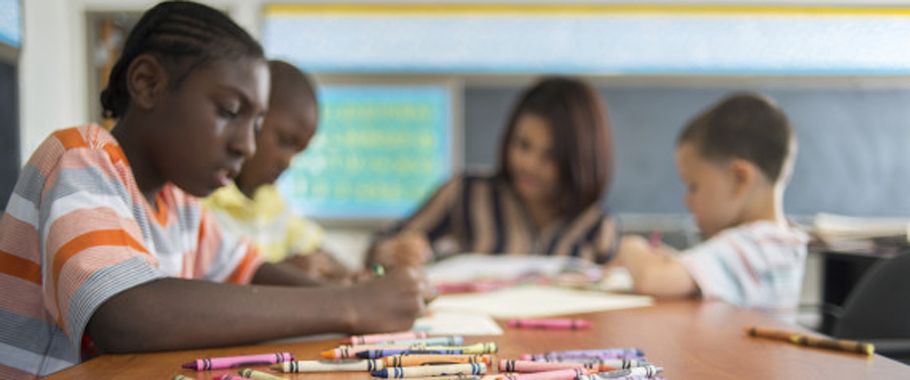
By Jonathan Stith | Originally Published at Huffington Post Black Voices. February 11, 2015 12:44 PM EST | Photographic Credit; Getty Images
There is a war going on outside — that no Black youth is safe from.
Most recently, we’ve seen this war played out through the extrajudicial killings of Trayvon Martin, Mike Brown, Tamir Rice and other victims of state-sanctioned violence. But we also know it through the devastation of mass incarceration under “New Jim Crow” policies and the “War on Drugs”. State violence against Black youth doesn’t end in the streets with police. It’s in our public education system and it’s killing our children. We charge Mentacide and demand an end to the war on youth.
Mentacide is “the deliberate and systematic destruction of a group’s minds with the ultimate objective being the extirpation of the group,” according to Black psychologist and political activist, Dr. Bobby E. Wright. In other words, if mentacide is the method, genocide is the goal.
State violence is government power that hurts, government power that harms. It is the violent indoctrination that in America, for Black children, learning means learning to stay in your place. The same lesson the Little Rock Nine learned when trying to integrate Central High School almost over half century ago is the same one youth learn today. The national guard of yesterday has been replaced with a school-to-prison pipeline that suspends Black youth at three times the rate of their White peers, but the end result is the same: immediate annihilation or compulsory assimilation to teach Black youth their place.
Education is the earliest form of state violence Black youth endure. The Department of Defense’s 1033 program equips school police with all the grenade launchers and tanks they can haul while our students scramble to find guidance counselors and books. The federal government has denounced the school to prison pipeline while continuing to fund it.
Before his fateful encounter with George Zimmerman, Trayvon Martin was suspended in school for carrying a plastic bag. Had it not been for his school’s overly punitive approach to discipline, he wouldn’t have even been in Sanford that night. Philadelphia’s 12-year old Laporshia Massey fell victim to gross and barbaric inequitable school funding. This same state violence killed 12 year old Philadelphia student Laporshia Massey, who couldn’t survive an asthma attack because Governor Corbett reduced education funding and the city couldn’t afford to have a school nurse on duty.
Mentacide explains state violence and self-destructive, intracommunal violence as two bullets towards the same target. Personal violence is often a symptom of structural violence. Schools that experience the most interpersonal violence are also the most underfunded and neglected. Only mentacide can explain why a Howard University Charter School Principal would have police escort three history teachers out of class for teaching Black History. Violence is any set of conditions that limit or restrict the chances of young people to lead successful and healthy lives. Violence is in the system, not the students.
In order to dismantle the school to prison pipeline and end the mentacide of Black youth, we need a radical transformation. According to that National Education Statistics, this year marks a watershed year and an important demographic shift in public education. Children of color have become the majority in schools. With this new shift, we need a new approach to schooling. We need to (re)public education.
Education is liberation is call to the transformative power of education that braved enslaved Africans to learn to read and write under threat of death, inspired Black politicians to universalize public education during Reconstruction, conceived Citizenship Schools, birthed Freedom Schools in Mississippi and developed Liberation schools from Black Panther breakfast programs in Oakland.
It requires of us to do as the quintessential teacher and youth organizer, Ella Baker taught:
“In order for us as poor and oppressed people to become part of a society that is meaningful, the system under which we now exist has to be radically changed… It means facing a system that does not lend its self to your needs and devising means by which you change that system.”
We’ll know black lives matter when we realize this vision of education as liberation and our children get the schools they deserve.
Jonathan Stith is a founding member and National Coordinator for the Alliance Educational Justice, a national network of intergenerational and youth-led organizations working to end the school-to-prison pipeline.He has 20 years of experience working with youth and community organizations to address social inequities. As the former Executive Director of the Youth Education Alliance (YEA), he was a critical leader in the School Modernization Campaign that won 3.2 billion dollars for school renovation and repair in the District. He was also a steering committee member of the Justice for DC Youth Coalition that successfully organized youth and their families to win critical juvenile justice reforms in the District. Last and most importantly, he is a father of three teenagers.
This post is part of the “Black Future Month” series produced by The Huffington Post and Black Lives Matter for Black History Month. Each day in February, this series will look at one of 28 different cultural and political issues affecting Black lives, from education to criminal-justice reform. To follow the conversation on Twitter, view #BlackFutureMonth — and to see all the posts as part of our Black History Month coverage, read here.
This piece was reprinted by EmpathyEducates with permission or license. We thank the Author, Jonathan Stith for his kindness, profundity and awareness. We appreciate the research and what we believe is a vital reflection.











Leave A Comment